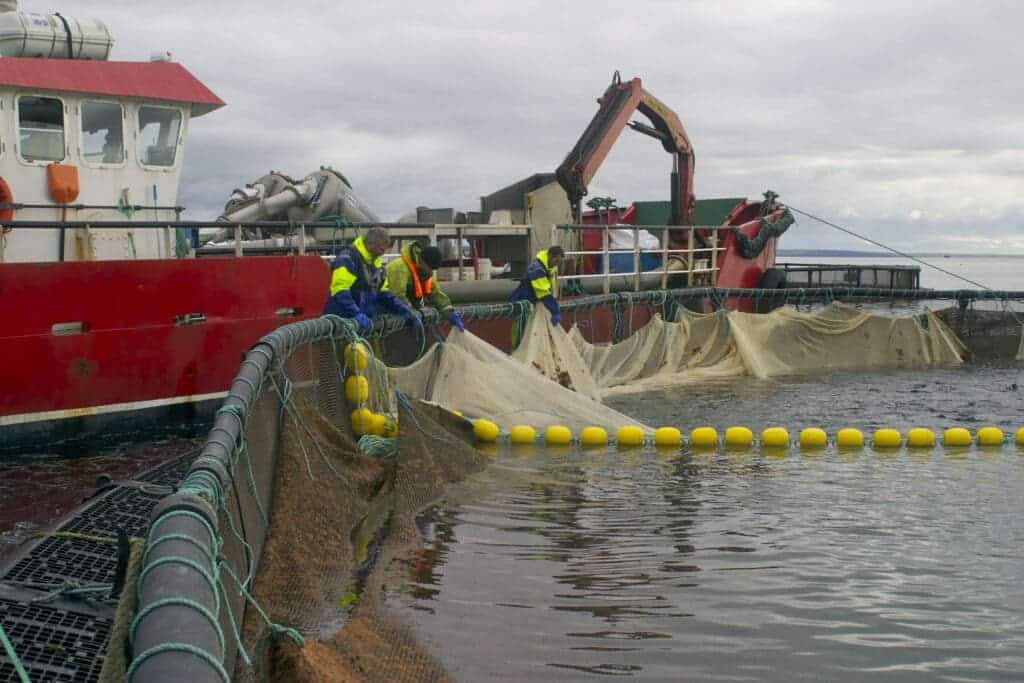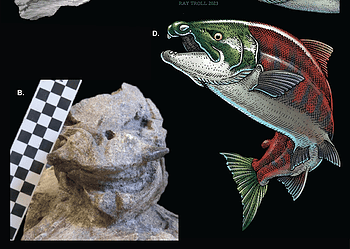Salmon farming has produced negative externalities worth US$47 billion since 2013, ranging from pollution of marine ecosystems to high fish mortality, according to a new report. In other words, salmon farming is taking a huge toll on the environment, and that damage is costing everyone.

Salmon aquaculture is dominated by a small number of multinational producers operating in just four farming regions – Chile, Norway, Canada, and Scotland. It’s an industry that has grown dramatically in recent years, as the world’s appetite for fish is also growing. Not only it’s already the fastest-growing food production sector in the world, but continued global growth in demand is expected.
But the sector is not without controversy.
Hundreds of thousands of fish at a time are raised in pens suspended in the open sea. They swim inside the pens for up to two years before being “harvested” for our dinner plates. They are fed on processed feed and treated with medicines to ward off disease and infestations. The pens keep the fish enclosed but allow parasites to get in. To make matters even worse,
The report “Dead Loss” by the consultancy Just Economics highlighted the economic, environmental, and social externalities caused by salmon farming, amounting to almost $50 billion. Of this cost, 60% is supported by producers — but 40% is indirectly supported by the wider society. This questions the positive image usually promoted by the farming companies, the researchers argued.
Mortality rates on salmon farms were found to be extremely high, with parasites (and their treatments), disease (and their treatments), pollution, and escapes being the major contributing factors. The combined cost of mortalities since 2013 in Norway and Scotland, the only countries with figures on this, was estimated at $9.8 billion in the report.
Even when parasites and disease don’t result in deaths, their treatment is costly, and the presence of lice, in particular, is a barrier to sector expansion. There are also clear consumer concerns about the use of medicines and chemicals to control them. Lice and disease spread are hastened by high stocking densities which are designed to increase the productivity of farms.
“Aquaculture activities are an interconnected part of the ecosystem in which they exist, and salmon farms make use of ‘free’ coastal ecosystem services such as clean water, appropriate temperatures, nutrient levels and so on. They also contribute to their deterioration, however, due to local pollution impacts from uneaten feed and feces, which are directly discharged into the marine environment,” the report reads.
Salmon farming is also generating substantial environmental pressure in local environments, and Atlantic salmon can only be farmed under certain conditions. As seas warm and available locations become exploited, the industry is running out of viable sites for new farms.
The main social issue listed by the researchers was the impact on salmon welfare. Researchers conclude that farm profitability and salmon welfare are inextricably linked, so farmers have a long-term motivation to keep salmon healthy. In the short-term, however, there may be a financial incentive to take shortcuts with fish husbandry. Over time, however, these lead to disease, lice, stress, and ultimately higher mortality rates, which also result in financial losses.
Moreover, there are strong (and growing) consumer preferences for high fish welfare, especially in Europe. A recent study found that the average European consumer would be willing to pay 14% more for salmon with higher welfare standards, and other areas seem to be picking up the same trend.
“The demand for seafood is expected to increase in coming years and part of this will have to be met by increased aquaculture production. Fish farming has the potential therefore to be a significant source of social, economic, and environmental value but farming practices matter greatly and determine whether the industry can be considered a net loss or net benefit to society,” the report reads.
In conclusion, the researchers also listed a set of recommendations for changes to be carried out in the sector. Economic benefits of salmon farming have to be balanced against other coastal industries such as tourism, angling, and wider environmental impacts, while governments should be prepared to support alternative technologies that improve social and environmental standards.
Meanwhile, consumers should be prepared to pay more for salmon where their economic circumstances allow, and/or to consume it less frequently. As part of this, consumers could seek out alternatives to carnivorous fish such as molluscs that provide dietary and economic benefits at lower social, economic, and environmental costs.
Reacting to the report, a spokesperson of Mowi, a Norwegian salmon company, told The Guardian: “We are pleased that the report finds that, when considering the full range of benefits and impacts, the business of salmon farming demonstrates overall positive benefit. We agree that there are opportunities for continued improvements for our business.”






